Beauty Russian troops. Petr Ivanovich Bagration
A.P. Ermolov
The Bagration dynasty is considered one of the most ancient - in the Armenian and Georgian chronicle tradition, their ancestor was a descendant of the legendary biblical David named Naom, sixty-two generations apart from the progenitor of all the people of Adam. From Naoma, the Bagration family is led to Bagrat III, who in 978 became the ruler of Western Georgia, and in 1008, having united the warring nations into an independent state, he assumed the title of the Georgian king. In addition, among the ancestors of the famous Russian commander, King David IV the Builder stands out, who defeated the huge Muslim army in August 1121 and liberated the Seljuk Turks from their homeland, the famous Queen Tamara, whose reign is called stories Of Georgia by the “Golden Age”, King George V of the Brilliant, who expelled the Mongol ratifications from Georgia in 1334.
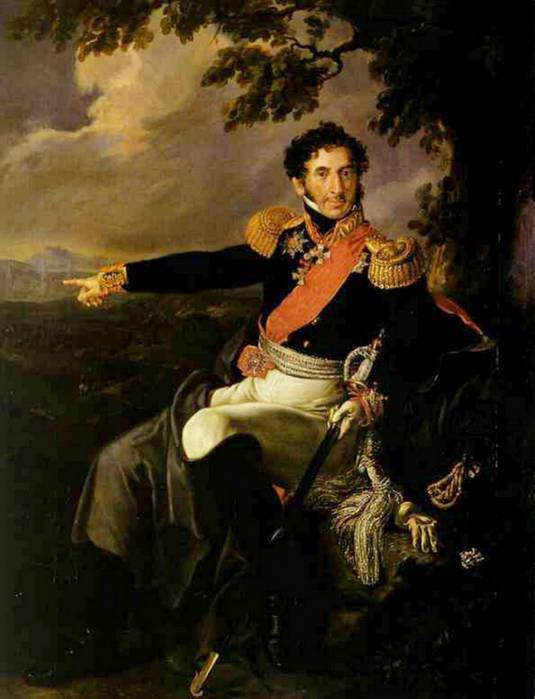
One of the closest ancestors of Peter Bagration, King Vakhtang VI, in 1723 was forced to leave his kingdom (together with his family and his confidants) (Georgia was subjected to another Turkish invasion) and move to Russia. His nephew, Tsarevich Alexander, subsequently joined the Russian army, rose to the rank of lieutenant colonel, and took part in battles in the North Caucasus. In the commandant command stationed in the Kizlyar Fortress, Prince Alexandrovich Bagration's son also served in the military service. And 10 July 1765 in his family was born a son, Peter.
The future great commander spent his childhood years in his parents 'house on the God-forgotten outskirts of the empire, far from the capitals, palaces and guards' brilliance. That is what explains the almost complete absence of any information about his first years of life. It is only known that Peter spent some time in the school for officers' children, which was open at the Kizlyar commandant's office. At this his training ended, and subsequently many famous personalities who knew the prince well noted his rather mediocre general education. In particular, the Russian military leader Alexei Yermolov wrote in his memoirs: “Prince Bagration, from his very youthful years with absolutely no condition and no mentor, did not have the means to be educated ... He was gifted with happy abilities from nature and left without education and at the age of seventeen military service. "
The story of the first visit by Peter Ivanovich of the Northern capital of Russia is curious. Anna Golitsyna (nee Princess Bagration) at a dinner at Grigory Potemkin asked to take her young nephew under her protection. The High Prince immediately sent a messenger after him. Unfortunately, the young man arrived in the city quite recently and had not yet had time to get decent clothes. Bagration was saved by the butler of Princess Golitsyna, someone named Karelin, who lent him his own dress. As a result, before the "magnificent prince of Taurida," Bagration appeared in a caftan with someone else's shoulder. Briefly speaking with him, Potemkin identified the guy as a musketeer. Thus, the commander’s glorious military career began in the Astrakhan Infantry Regiment, later transformed into the Caucasian Musketeers. By the way, this story had a continuation. In 1811, Prince Bagration - already a famous folk hero - spent summer with friends and relatives at Princess Golitsyna. One day, looking attentively at an old butler passing by, the commander recognized his savior. Without saying a word, Pyotr Ivanovich rose and embraced the elderly man, and then solemnly said: “Have you, good Karelin, forgotten how I came to Potemkin in your caftan? Without you, it may be, I would not be what you now see me. Thank you a thousand times! ”
His first steps in the army, Bagration was doing in the militant Caucasus, where the Russian Empire argued with Iran and Turkey for the right to possess a strategically important crossroads of trade routes. After the defeat of the Turks in the 1768-1774 war, North Ossetia and Kabarda became attached to the Russian Empire, which led to discontent of the local population. The movement against the Russians was led by an Islamic preacher, known as Sheikh Mansur. The passionate words of Mansur, who intelligibly and simply explained the wise religious messages to the people, earned him fame, as well as power over thousands of fanatical warriors. The sheikh also played into the February earthquake in the Caucasus in 1785, perceived by local residents as a manifestation of the anger of Allah predicted by the preacher. Kogla news of the declared rebellious leader and popular unrest reached St. Petersburg, there are not seriously worried. Lieutenant-General Pavel Potemkin, who is the commander of the Russian army in the Caucasus, sent a formidable proclamation around the auls, in which he ordered the local residents "not to listen to the false prophecies of this deceiver." In addition to the words, practical actions followed - in September 1783 a military detachment of Colonel Pierre went to Chechnya, with the goal of capturing a rebellious sheikh. The detachment was reinforced by a battalion of Kabardians, hundreds of Cossacks and two companies of the Tomsk regiment. Among others, there was a non-commissioned officer Peter Bagration, the adjutant of the commander. In October, the first battle with the rebels took place, as a result of which Pieri’s forces occupied the Khankala gorge. Some time later, an attack was taken and set on fire the patrimonial nest of the sheikh, the village of Aldy. However, the main task could not be fulfilled - in advance warned of the approach of the Russians, Mansur managed to dissolve in the mountains with his soldiers.
On the way home during a crossing over the Sunzha, a Russian detachment was ambushed and almost completely destroyed. In this battle, Colonel Pierre found his death, and his young adjutant received his first wound. Collected trophy weapon Chechens found Bagration among the bodies of those killed. Mansur showed nobility, forbidding the soldiers to avenge the destruction of the village, and Peter Ivanovich managed to survive. According to one version, the Chechens returned Bagration without a ransom, saying that "the sheikh does not take money for real men." According to another version, the ransom for the non-commissioned officer was nevertheless paid. Anyway, Pyotr Ivanovich returned to the unit and continued his service. As part of the Caucasian Musketeer Regiment, the future commander participated in the 1783-1786 campaigns, proving himself to be a courageous and brave soldier, and the fierce battles of those years became for him a first-class military school. The fate of Sheikh Mansur, who taught Bagration the first lessons of military art, turned out to be sad, as one would expect. At the head of his faithful comrades-in-arms, he continued to resist up to 1791, when Russian troops laid siege to the fortress of the Turks Anapa. Mansur fought along with the rest of the defenders of the stronghold, tried to undermine the powder cellar, but was captured and sent to St. Petersburg, where he soon died from consumption.
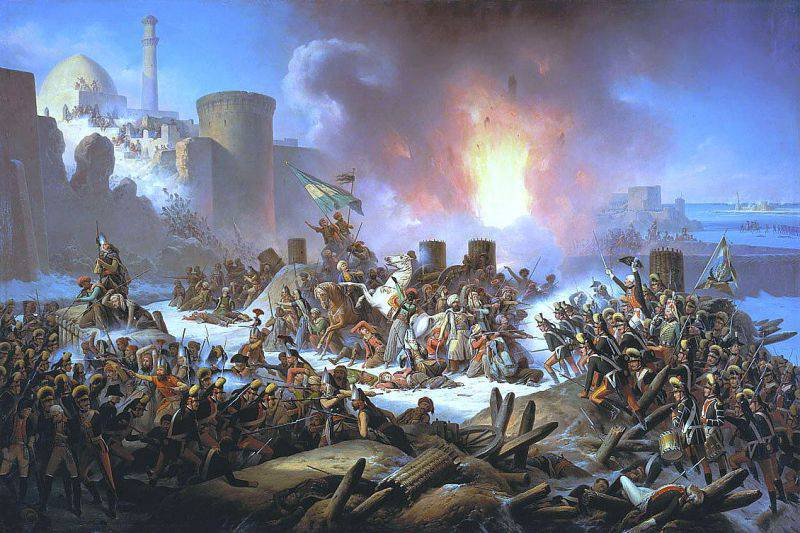
Y. Sukhodolsky, 1853, the Storm of Ochakov 6 December, 1788
Central Military History Museum of Artillery, Engineers and Communications
In 1787, a new war began with the Turks - the Ottoman Empire demanded the return of the Crimea, as well as the refusal of Russia from the protectorate over Georgia and agreement to inspect the ships passing through the Bosporus and the Dardanelles. Having received a categorical "no", Sultan Abdul-Hamid began hostilities. In 1788, the Caucasian Musketeers Regiment was brought up near Ochakov, where the Yekaterinoslav Army General Field Marshal Potemkin-Tavrichesky was preparing for an assault. The commander-in-chief acted, by the way, extremely sluggishly - the assault was repeatedly postponed, and the besieged Turkish garrison managed to make two sorties. Only at the beginning of December 1788, at seven o'clock in the morning at 23-degree frost, Russian troops began to storm. It lasted only a couple of hours and was successful. The courage of Bagration, among the first to break into the fortress, was marked by Suvorov himself. After that, the Caucasian regiment returned to the Caucasus and took part in the 1790 campaign of the year against the Highlanders and Turks. In this regiment, Peter Ivanovich remained until the middle of 1792, successively passing all the steps from sergeant to captain. In the summer of 1792, he was transferred to the Kiev Equestrian Regiment of the Horse.
In March, an uprising broke out in Poland 1794, led by a participant in the war of independence of the United States of America, small-seat nobleman Tadeusz Kosciuszko. In May of this year, a large detachment under the leadership of Alexander Suvorov was sent to suppress the rebellion. It also included the Sophia Carabinieri Regiment, which by then served as Prime Major Bagration. In this campaign, Pyotr Ivanovich showed himself to be an extraordinary commander, showing not only exceptional courage in battles, but also rare composure, decisiveness and speed of decision-making. Suvorov treated Bagration with confidence and undisguised sympathy, affectionately calling him "Prince Peter." In October, 1794, a twenty-nine-year-old Bagration, was promoted to lieutenant colonel.
In 1798, Peter Ivanovich — already a colonel — led the sixth Jaeger Regiment. Once Alexey Arakcheev, who loved external order, descended on Bagration with a sudden inspection and found the state of the regiment entrusted to him to be "excellent." Soon after, the prince received the rank of major general. In France, meanwhile, events occurred that echoed throughout Europe. The great French revolution, as well as the execution of Louis XVI, forced the European monarchies to forget about their previous differences at once and rebel against the republic, by their very existence threatening the foundations of autocracy. In 1792, Prussia and Austria, having formed the First Coalition, directed their forces against France. Military operations with varying success went up to 1796, when the Italian army was led by the young General Bonaparte. The French, yielding in arms and numbers, in a matter of months, drove the Austrians out of Italy, and a little later, Switzerland came under their control. In order to stop the steady expansion of the territories occupied by the French, a second coalition was formed in 1797, which Russia joined. In November, the 1798 forty-thousand Russian corps moved to Italy, and Alexander Suvorov was appointed commander of the combined Russian-Austrian forces.
In this campaign, Bagration became an indispensable assistant to the legendary field marshal. He led the avant-garde of the Russian-Austrian army to surrender the defenders of the fortress of Brescia, captured the cities of Lecco and Bergamo, distinguished himself in a three-day battle on the banks of the Trebbia and Tidone rivers, and was wounded twice. In August, the 1799 French and Allied armies met near the city of Novi. In this battle, Suvorov entrusted Peter Ivanovich to deliver the main attack, which ultimately decided the outcome of the battle. The victories of the Russian genius frightened the allies and, fearing the growing influence of Russia, the Austrians insisted on sending Russian troops to Switzerland to join the Rimsky-Korsakov corps. At the same time, the Allies withdrew their forces from the country, leaving the Russians alone in front of the superior forces of the enemy. In such conditions in the autumn 1799 began the famous Swiss campaign of Suvorov.
Already on the march, it turned out that the path through the St. Gotthard Pass was practically impassable - the road was held by significant enemy forces. During the third attack, the best fighters of Bagration made their way through the cliffs to the rear of the defenders and forced them, throwing artillery, to hastily retreat. In the future, Peter Ivanovich invariably led the vanguard, the first to take upon himself the blows of the enemy and paving the way through the French barriers in the mountains. At Lake Lucerne, it turned out that further progress is possible only through a snow-covered pass called Kinzig. The decision to lead a soldier along a mountain trail eighteen kilometers long, now called the “Suvorov Path,” could only be dictated by the absolute certainty of the commander in the strength of his people’s spirit. Two days later, the troops entered the Muten Valley and were surrounded by the enemy in a stone bag with virtually no ammunition and food. After consulting, the generals decided to break through to the east. Major-General Bagration, who headed the rearguard, covered the exit from the encirclement. As part of the sixth Eger regiment, which became the core of his squad, only sixteen officers remained and no more than three hundred soldiers. Peter Ivanovich himself received another wound. The 1798-1799 campaign put Bagration in the front ranks of the national military elite. Suvorov, without hesitation, trusted "Prince Peter" the most responsible and dangerous tasks, calling him "the most excellent and worthy of the highest degrees of the general." Once he gave Peter Ivanovich a sword, with which he did not part until the last days of his life. Returning to Russia, the prince became the chief of the Life-Chasseurs battalion, which was later deployed in the Life Guards Jäger regiment.
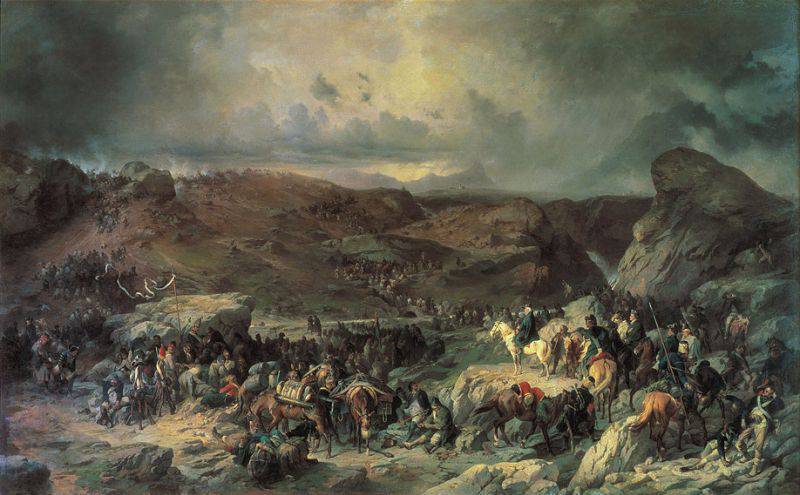
1799 year. Russian troops under the leadership of A. V. Suvorov pass St. Gotthard Pass. Artist A. E. Kotzebue
In 1800, Emperor Paul I, in his characteristic, unceremonious manner, climbed into the private life of Peter Ivanovich, enticing an eighteen-year-old maid of honor, the grand-niece of Grigory Potemkin, Countess Ekaterina Skavronskaya. The wedding took place in September 1800 in the church of Gatchina Palace. Together, the couple lived no more than five years, and then on 1805, Bagration's wife left under the pretext of treatment in Europe. In the court circles of various countries princess enjoyed tremendous success. Far from her husband, she gave birth to a daughter; the Austrian Chancellor Metternich was rumored to be the father of the child. She never returned to Russia.
In 1801, differences with England and Austria led to Russia's withdrawal from the war with Napoleon and the conclusion of the Paris Peace Treaty. However, this peace did not last long, and four years later, Russia, England and Austria founded the Third Coalition, aimed no longer against the republic, but against the French Emperor Napoleon Bonaparte who had assumed the title. It was assumed that, having united in Bavaria, the allied forces (the Austrian army of the Mac and the Russian army of Kutuzov) would invade France through the Rhine. However, nothing happened - as a result of the brilliant rapid maneuver of the French, Austrian forces were surrounded by Ulm and chose to surrender. Kutuzov with his army of forty thousand was in a difficult position. Deprived of any support from the allies, having seven enemy corps in front of them, the Russians began to retreat to the east, leading incessant rearguard battles over four hundred miles of retreat. And, as during the Swiss campaign, Bagration's detachment covered the most dangerous areas, alternately turning into a rearguard or avant-garde.
In November, the vanguard of the French forces under the command of Marshal Murat, 1805, took Vienna and went to Tsnaym, trying to cut off Kutuzov’s escape routes. The situation of the Russians became critical, and Peter Ivanovich was ordered to stop Murat at any price. According to the memoirs of the participants, exposing the six-thousandth detachment of Russian soldiers against the thirty-thousandth avant-garde of the enemy, Mikhail Illarionovich crossed the prince, knowing full well that he was sending him to certain death. For eight hours, Bagration reflected at the village of Schöngraben the fierce attacks of the French. The Russians did not abandon their positions, even when the enemy, bypassing them, hit the rear. Only when he received the news that the main troops were out of danger, Pyotr Ivanovich headed the detachment with bayonets and paved the way through the ring of encirclement and soon joined Kutuzov. For the Shengrabensky case, the sixth Jäger Regiment - the first in the Russian army - received silver pipes with St. George ribbons, and its commander was awarded the rank of lieutenant general.
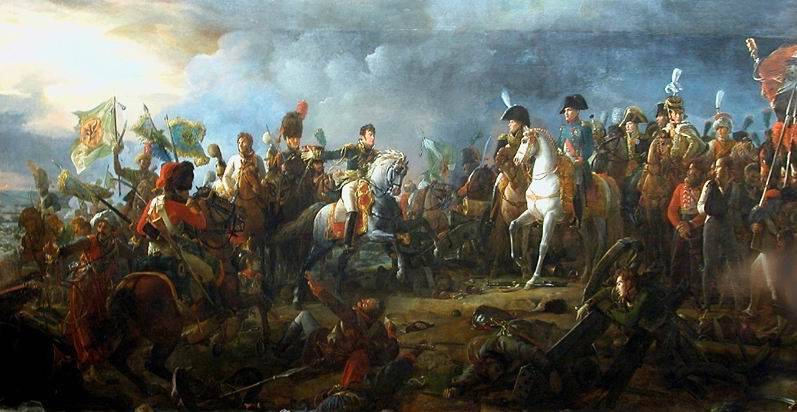
Francois Pascal Simon Gerard: The Battle of Austerlitz
In the second half of November, 1805, Mikhail Illarionovich, under the pressure of the emperor, gave Napoleon a general battle at Austerlitz. The self-confidence of the king had the saddest consequences. With a rapid attack, the French cut in two and surrounded the main forces of the Allies. Already six hours after the start of the battle, the Russian-Austrian army was put to flight. Only a few detachments on the flanks under the command of Dokhturov and Bagration did not succumb to panic, and, maintaining battle formations, withdrew. After the Battle of Austerlitz, the Third Coalition fell apart - Austria concluded a separate peace with Napoleon, and the Russian troops returned home.
In September, the Fourth Coalition, consisting of Russia, Sweden, Prussia and England, was framed by 1806 v. France. In October, the Prussian king presented an ultimatum to the French emperor, demanding to withdraw the army beyond the Rhine. In response, Napoleon utterly defeated the Prussians, who were learned mainly by the parade step, in the battles of Jena and Auerstadt. Having occupied the country, the French moved towards the Russians, who (for the umpteenth time) alone were left alone with a formidable adversary. But now the place of the head of the Russian army was occupied by field-marshal Mikhail Kamensky, an aged and completely incapable of leadership. Soon Kamensky was replaced by Buxgevden, and his, in turn, General Bennigsen. Troop movements were accompanied by continuous skirmishes, and according to the tradition established since the time of the Swiss campaign, the command of the rearguard or avant-garde of the Russian army (depending on whether it was advancing or retreating) was almost always confided to Bagration. In late January, 1807 Peter Ivanovich received an order from Bennigsen to knock the French out of the town of Preussisch-Eylau. As usual, the prince personally led his division into battle, the enemy was thrown back, and the next day the two armies met in a general duel.
After the bloody battle, the victory in which each of the parties attributed to itself, the Russian troops left in the direction of Koenigsberg. Bagration still commanded the vanguard and all the time was in close contact with the enemy. At the beginning of June, he turned the enemy away from Altkirchen, and after four days he restrained the attacks of French cavalry from Gutstadt, while the main forces strengthened in the vicinity of Heilsberg. In June, 1807 hosted the Battle of Friedland, in which Russian troops were defeated. In this battle, Bagration commanded the left flank, which was dealt the main blow of the enemy. Artillery fire combined with continuous attacks knocked over parts of Pyotr Ivanovich, who, with a sword in his hand, disposed of in the thick of battle, encouraging the soldiers to follow his example. On the right flank, the Russian army was in an even worse position: the French, who had attacked from three sides, threw Gorchakov's troops into the river. The battle ended in the late evening - the Russian army only partially retained the battle formations, and that, thanks to the skillful actions of Bagration, who was awarded Friedland with a gold sword with the inscription "For Bravery". After that, the French and Russian emperors turned to peace negotiations, culminating in the conclusion of the Peace of Tilsit.
In 1808 Bagration went to the Russian-Swedish war. Being appointed commander of the infantry division, he occupied Waza, Hristianstadt, Abo and the Aland Islands. The plan for a decisive blow to the Swedes drawn up by Alexander I included a winter hike to Stockholm on the ice of the Gulf of Bothnia. Most of the generals, including the commander-in-chief, Count Buksgevden, categorically objected to this event, rightly pointing to the enormous risk associated with advancing a huge number of troops and artillery on the spring ice. When the count sent by the emperor to organize a campaign, Count Arakcheev turned to his old friend Bagration for advice, he received a mean reply: “You will follow the command, let's go.” Having become the head of one of the three columns, Petr Ivanovich successfully reached the Swedish coast and occupied the place called Grisselgam near Stockholm.
In the short time between the war with the Swedes and the Patriotic, Bagration had to visit Moldova. At the end of the summer of 1809, he led the Moldovan army, which for the third year acted against Turkey without any particular results. It was rumored that the new appointment was an honorable exile. It was a hobby of the celebrated commander, covered with the glory of military campaigns, Grand Duchess Catherine Pavlovna. In order to stop the unallowable romance, Pyotr Ivanovich was fired as generals from infateria and sent to fight the Turks. Upon arrival, Bagration with Suvorov decisively and quickly began to work. Without removing the blockade of Ishmael, with an army of only twenty thousand people, he took several cities during August, and in early September, routed the corps of selected troops of the Turks, then laid siege to Silistra, and three days later took Ishmael. To the aid of the Turks besieged in Silistria, the troops of the Grand Vizier moved, their numbers were not inferior to those of the Russian siege corps. Bagration defeated them in October at the battle of the Tartar, and then, having learned that the main forces of the Grand Vizier approached Silistria, prudently sent troops across the Danube, which caused displeasure of the sovereign. In the spring of 1810, Peter Ivanovich, as commander in chief, was replaced by Count Nikolai Kamensky.
By that time, Pyotr Ivanovich, without a doubt, was the favorite of the entire Russian army and enjoyed unlimited trust among the soldiers and officers. The prince deserved respect for his people not only by his rare courage on the battlefield, but also by his sensitive attitude to the needs of the soldiers, constantly taking care that his warriors were healthy, well dressed, shod and fed in time. Training and education of troops Bagration built on the basis of the system developed by the great Suvorov. Like his teacher, he understood perfectly well that war is dangerous and hard work, in the first place, requiring persistent preparation, dedication and professionalism. Undeniable is his contribution to the development of the practice of conducting rearguard and avant-garde battles. By unanimous admission of military historians, Peter Ivanovich was an unsurpassed master of the organization of these very complex types of combat. The methods of command and control used by the prince have always been distinguished by careful planning of the forthcoming actions. Attention to detail was also expressed in the Bagrationovsky "Manual to the infantry officers on the day of the battle," who examined in detail the actions in the columns and in the loose formation, as well as the methods of firing, taking into account the terrain. Peter Ivanovich paid special attention to the maintenance in the soldiers of the faith in the power of the Russian bayonet, the education in them of the spirit of courage, courage and perseverance.
In early September, 1811 Bagration took the place of the commander of the Podolsk stationed in Ukraine (later the second Western) army. In the event of Napoleon's invasion, a plan was drawn up according to which one of the three Russian armies took the blow of the main forces of the enemy, while the rest acted in the rear and on the flanks of the French. This project, created by Prussian military theorist Pfulem, was initially flawed, since it did not consider the possibility of simultaneously moving the enemy in several directions. As a result, by the beginning of the war, Russian forces were fragmented, totaling 210 thousands against 600 thousands of soldiers of the “Great Army”, which entered the borders of Russia on the night of June 12 1812 near the city of Kovno. The directives received by the army did not bring clarity, and Pyotr Ivanovich decided to divert his forces to Minsk at his own peril and risk, where he intended to unite with the first army. This campaign revealed a rather complicated flank maneuver, performed in close proximity to the enemy. The French threatened the rear and flank, and Davout’s corps cut off the withdrawal of the second army from the north, forcing Bagration to constantly change direction. Fights with the superior forces of the French threatened with huge losses and, accordingly, loss of the advantage gained from the unification of the Russian armies.
By mid-July, the corps Davout managed to block the path of Bagration's army, which was striving to cross to the opposite bank of the Dnieper. A fierce battle took place in the area of Saltanovka, after which the Russians came to Smolensk and successfully united with the main forces. The march of the second army rightfully became one of the outstanding deeds of military history. Evaluating the significance of the campaign, one military writer of the first half of the nineteenth century noted: “Looking at the map and taking compasses in check, it is easy to make sure even with a superficial glance how little Prince Bagration had left the chance to achieve a connection ... Let me be allowed One question is - has any general ever been put in a more critical position and has any military come out of such a position with more honor? ”
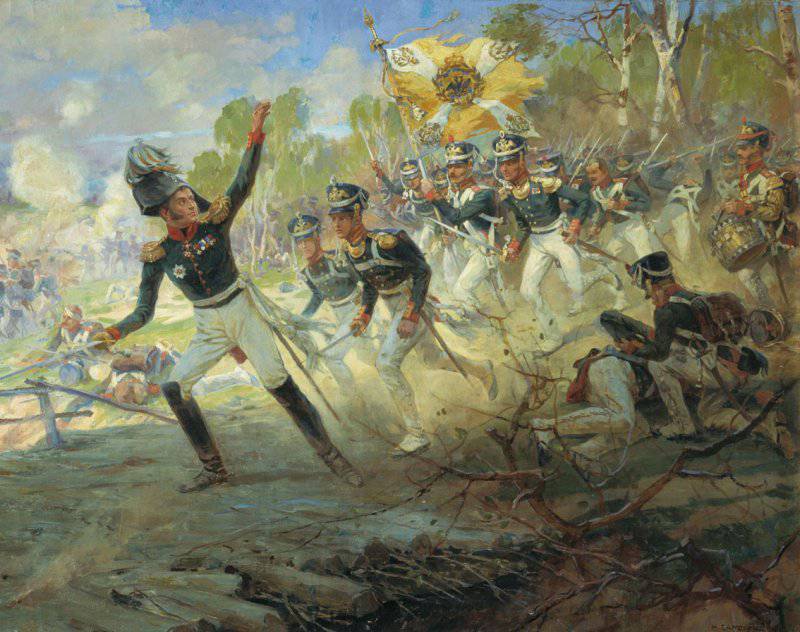
N.S. Samokish. Feat soldiers Rajewski under Saltanovka
In mid-August, under pressure from the public, the Russian emperor was forced to appoint to the place of the commander of the Russian army, the outstanding commander Mikhail Kutuzov. Contrary to the established military strategy, which consists in the fact that victory is achieved by defeating the enemy in a general battle, the field marshal decided to withdraw the Russian forces from the blow and exhaust the enemy in rear-guard skirmishes. The commander planned to go over to the counteroffensive only after reinforcing the army with reserves and numerical superiority over the enemy. Together with the departure to the east, the partisan movement spontaneously developed on the lands seized by the French. Pyotr Ivanovich was one of the first to realize how powerful the effect of joint actions of the armed people and the regular army is. In the second half of August, a meeting of Bagration and Denis Davydov took place in the Kolotsky Monastery, the result of which was the order: “Akhtyrsky hussarsky regiment to lieutenant colonel Davydov. Let me take the fifty hussars of the regiment and one hundred fifty Cossacks from Major General Karpov. I order you to take all measures in order to disturb the enemy and strive to take foragers not from the flank, but in the rear and in the middle, to upset parks and carts, demolish ferries and select all methods. ” Bagration's calculation of the effectiveness of sabotage in the enemy rear was fully justified. Very soon, the guerrillas, with the support of the commander in chief, fought throughout the occupied territory. In addition to the Davydov detachment, guerrilla groups were formed under the leadership of General Dorokhov, guard captain Seslavin, captain Fisher, colonel Kudashev and many others.
22 August 1812 Russian army was in the area of Borodino, blocking two roads leading to Moscow (the Old and New Smolensk), which the French were advancing on. The intention of Mikhail Illarionovich was to give the enemy a defensive battle to inflict maximum damage and change the balance of forces in his favor. The Russian position occupied eight kilometers along the front, the left flank adjoined the impassable Utitsky forest, and the right flank near the village of Maslovo to the Moscow River. The most vulnerable part of the position was the left flank. In his message to Alexander I, Kutuzov wrote: “I will try to correct the weak point of this position from the left flank with art.” In this place the commander-in-chief put the most reliable troops of the second army of Bagration, ordering the flank to be strengthened with earthen structures. At the village of Semenovskaya, three field fortifications were arranged, later called Bagration flash. To the west of the village, a kilometer from the Russian positions, there was an advanced fortification - Shevardinsky redoubt. The battle for it, played out on August 24, became a bloody and formidable prelude to the battle. Napoleon threw thirty thousand infantry and ten thousand cavalry against the defensive fortification of the twelve thousand Russian detachment. Brutal carte-rifle and rifle fire changed hand-to-hand combat at close range. Under the pressure of the enemy, the Russians retreated in an organized manner, but at seventeen o'clock in the afternoon Bagration personally led the Grenadier Division to the counterattack and knocked the French out of the redoubt. The fight continued until dark and only late in the evening, according to Kutuzov's order, Pyotr Ivanovich left the position. The battle for the redoubt revealed the intention of Napoleon to deliver the main blow to the left wing of the Russian army - it was in this direction that he concentrated the main forces.
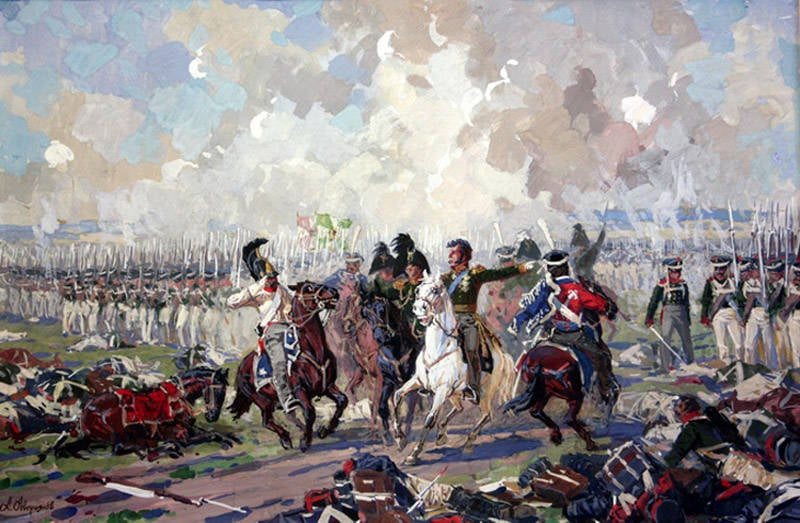
General PII Bagration gives the order. Alexander AVERYANOV
According to the existing military custom, they prepared for the decisive battle as a show — all the officers carefully shaved, changed into clean linen, put on parade uniforms and orders, sultans on shakos and white gloves. Thanks to this tradition, you can almost reliably imagine the prince in his last battle - with the three stars of the orders of saints Vladimir, George and Andrew, with the blue St. Andrew's ribbon. The battle of Borodino began at dawn 26 number artillery cannon. The French first rushed to the village of Borodino, but that was a distraction blow - the main events took place at the Raevsky battery and on Bagration flash. The first attack took place around six in the morning. The troops of the "Iron" Marshal Louis Davou were stopped by hurricane artillery and rifle fire. An hour later, a new assault followed, during which the French reached the left flush, but were soon knocked out by a counterattack. The enemy pulled up reserves, and at eight o'clock the third attack was organized - several flashes passed from hand to hand, but in the end the Russians kept them. Over the next four hours, the corps of Ney, Murat, Davout and Junot were five times making desperate attempts to succeed. The eighth attack, which the Russian troops met with a bayonet strike, became the most furious. The military historian Dmitry Buturlin, who was a participant in this battle, noted: “A terrible battle followed, in which miracles of supernatural courage were exhausted from both sides. The gunners, horsemen and footmen of both sides, mixed together, represented a terrible sight of a mass of warriors, arguing with the frenzy of despair. ” During the eighth attack, a fragment of the core shattered the left leg of the prince, but Bagration remained on the battlefield until he made sure that the cuirassiers rejected the French.
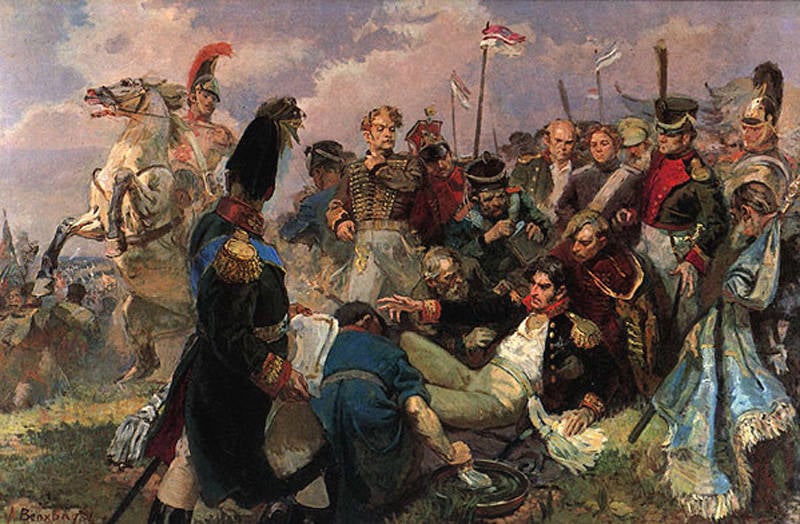
Artist A.I.Vepkhvadze. 1948
With great delay, foreign bodies, including a fragment of the nucleus, were removed from the commander's wound. The wound was recognized by doctors as extremely dangerous and caused unbearable pain for the prince, but Peter Ivanovich flatly refused amputation. In one of the last letters to the emperor, he said: “I do not regret this injury to the smallest, always being ready to sacrifice to defend the fatherland and the last drop of my blood ...” The commander, who lived on the battlefields all his life, was taken to the estate of his good comrade, Prince Boris Golitsyn - to the village of Sima in the Vladimir province. 12 September 1812, seventeen days after being wounded, Peter Bagration died from gangrene.
In 1839, the famous Denis Davydov suggested that Nicholas I move the ashes of the general, whose name became a symbol of Russian military glory, to the place of the Battle of Borodino. The emperor agreed with this, and since then on Kurgan height, where Rayevsky's battery once stood, there was a simple black tombstone - the grave of Bagration. In 1932, the tomb of the celebrated commander was barbarously ravaged, the monument was restored only half a century later, and the remains of Bagration found among the garbage were solemnly reburied.
According to the materials of the book “The Lion of the Russian Army” by A. Mikaberizde and the weekly edition “Our History. 100 Great Names »
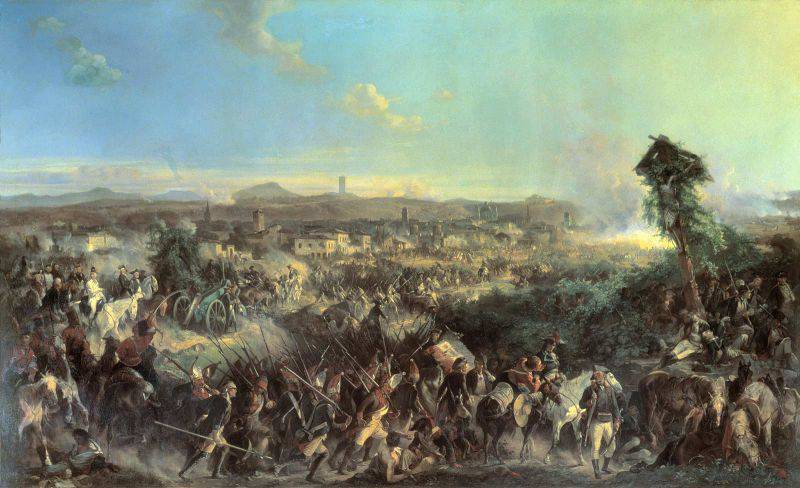
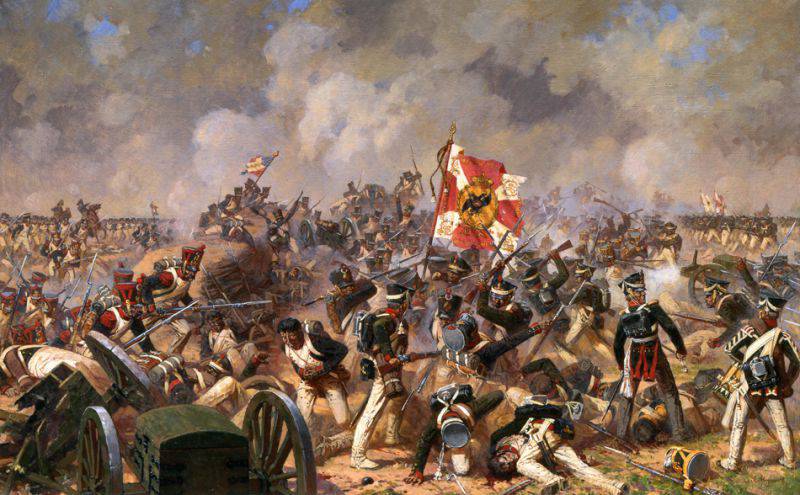
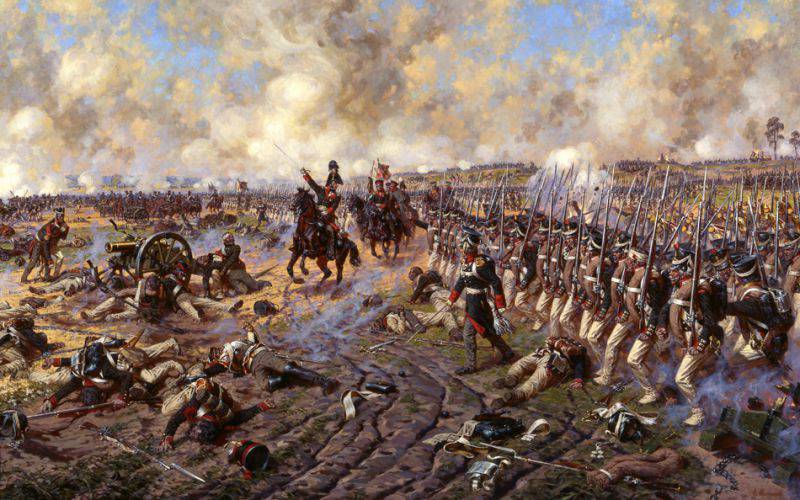
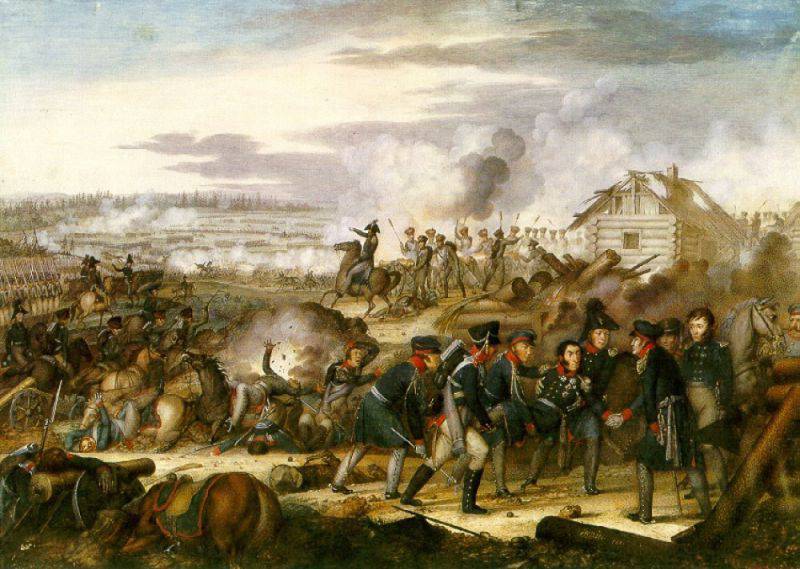
Information